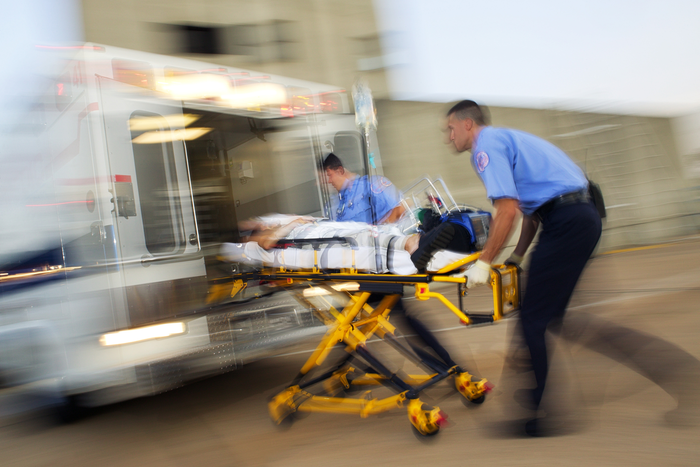
EMS professionals are constantly subjected to pathogens. From infected patients and their bodily fluids to the equipment used to treat their conditions, emergency medicine comes with many hazards. And it’s your job to try to minimize exposure—both for you and your patients. There are generally three ways of achieving this: protecting yourself, protecting your patients, and maintaining clean equipment. And one of the most susceptible pieces of equipment for becoming a vector is your portable suction machine.
Let’s discuss each of these important factors.
Protect Yourself
One of the most effective ways of protecting yourself against dangerous pathogens is to ALWAYS wear personal protective equipment (PPE). This includes:
- Gloves
- Eye protection
- Mask
- Gown (when appropriate)
As a firefighter, you would never consider entering a burning building without your gear and airpack. So if you are an EMT or paramedic, why would you ever come in contact with a patient without first donning PPE? The answer: You wouldn’t. Not when you stop to consider all you are exposed to on a daily basis. Bacteria, viruses, infectious fluids. There are scads of dangerous organisms just waiting for the opportunity to infect a new host. Take the time to don the appropriate protection and consider EVERY patient to be highly infectious.
Protect Your Patients
Just as you protect yourself, you must also protect your patients. Here are a few pointers:
- Don’t report for duty if you are sick—you can spread dangerous germs to vulnerable patients.
- If your patient is immunocompromised (such as in HIV), be sure to take extra precautions when performing invasive procedures (such as IV insertion).
- Protect patients from temperature extremes, especially during extended rescues, such as extrications, so that their immune systems are not overtaxed.
Maintain Your Equipment
EMS calls can be chaotic affairs. They happen anywhere, from highways to trails to backyard swimming pools. You are required to treat your patients not in the controlled environment of an emergency room but wherever their emergency occurs. And anyone who works in the field can attest to the mess. Backboards become bloodied, dirty needles abound, and airway equipment can be coated with whatever happens to be streaming from the patient. And one of your most important tools can become the most infectious: your portable suction machine.
The nature of a portable suction unit means it is highly susceptible to becoming a vector for pathogens. Every piece of the machine—from the catheter to the tubing to the collection chamber—is subjected to the patient’s bodily fluids, be they vomitus, blood, or sputum. So what can you do to minimize the risk? Here are some important recommendations:
- Clean the suction unit after EVERY use, even if it appears nothing made it to the chamber.
- Follow manufacturer recommendations for cleaning, such as never submerging the unit.
- Use a proven disinfectant or a bleach mixture to clean the entire unit, including the knobs.
- NEVER reuse disposable parts of the suction unit—they are disposable for a reason!
- NEVER use the portable suction machine on two patients at once—keep plenty of backup units for mass-casualty situations.
- Maintain the portable suction unit through daily checks, battery replacement, and visual inspection.
- Take the unit with you on ALL respiratory calls, so that it is there when you need it!
As an emergency responder, you are constantly subjected to dangerous pathogens. So be sure that your portable suction machine does not become a vector.















